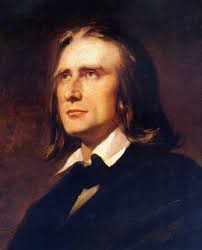The History of Les Préludes by Franz Liszt
Les Préludes is one of the most celebrated orchestral works by the Romantic composer Franz Liszt. Composed in the early 1850s and first performed in 1854, this symphonic poem is the third in a series of thirteen symphonic poems Liszt would compose, and it remains the most frequently performed among them. Les Préludes marked a turning point in the history of orchestral music by helping to establish the genre of the symphonic poem—a form that would influence composers for generations.
Origins and Inspiration
The origin of Les Préludes is complex and steeped in Romantic ideals. Initially, the music was conceived as part of an overture to a set of choral works called Les quatre éléments (The Four Elements), which Liszt had begun around 1844. However, that project was eventually abandoned, and Liszt repurposed the music to create a self-contained orchestral work.
To give the piece literary context, Liszt later connected it to a poem by Alphonse de Lamartine, a French Romantic poet. The poem, also titled Les Préludes, is part of Lamartine’s collection Méditations poétiques and reflects on the philosophical themes of love, war, and destiny. Liszt used these poetic reflections to shape a loose programmatic narrative for the composition, although the connection to the poem was made after the music was already largely completed.
The Symphonic Poem and Liszt’s Innovation
Franz Liszt was a pioneer of the symphonic poem, a new musical form in the 19th century that aimed to express poetic, philosophical, or narrative ideas within a single movement. Unlike traditional symphonies, which followed strict formal structures, the symphonic poem was freer and more flexible, often built around thematic transformation and dramatic development.
Les Préludes is widely regarded as the first successful and mature symphonic poem. It exemplifies Liszt’s mastery of thematic transformation—a technique in which a single musical theme undergoes various changes to reflect different emotional states or scenes. The opening theme, for instance, evolves throughout the piece to depict the shifting experiences of human life, from tranquil reflection to the trials of love and the storms of war.
Structure and Musical Language
Although Les Préludes is a single continuous movement, it can be understood as divided into several contrasting sections, each corresponding to different emotional or dramatic states. The music opens with a gentle, contemplative introduction that sets a tone of philosophical reflection. As the work unfolds, it moves through lyrical passages representing love, stormy and aggressive episodes symbolizing struggle and conflict, and a triumphant finale that suggests victory and resolution.
Liszt’s use of the orchestra in Les Préludes is bold and colorful, utilizing dynamic contrasts, rich harmonies, and brilliant orchestration to convey the sweeping drama of the narrative. His innovative approach had a profound impact on later composers such as Richard Strauss and Gustav Mahler.
Premiere and Reception
Les Préludes premiered on February 23, 1854, in Weimar, where Liszt was serving as Kapellmeister. It was conducted by Liszt himself and received a favorable reception. Over time, it gained popularity and became a staple of the Romantic orchestral repertoire.
Despite some critical debate over its philosophical depth and the authenticity of its literary association with Lamartine, Les Préludes has endured as one of Liszt’s most influential and representative works.
Legacy
Today, Les Préludes stands as a landmark in the development of programmatic orchestral music. It showcases Liszt’s revolutionary ideas about musical storytelling and orchestral color, and it remains an essential piece in the symphonic repertoire. Its bold themes, dramatic contrasts, and visionary form continue to captivate audiences and performers alike.


Comments are closed